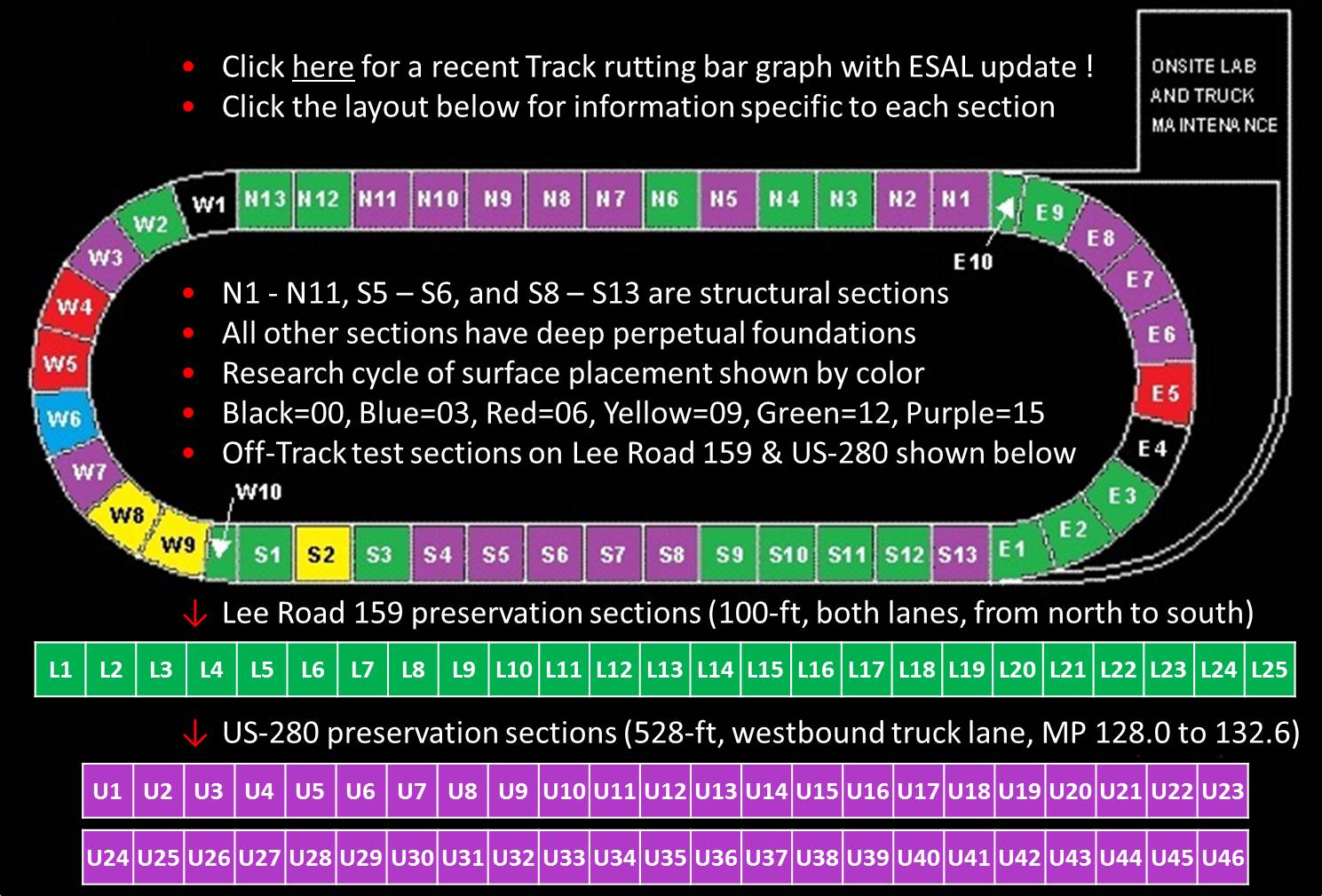|
HOTLINKS to download
PAVE reports, review
upcoming NCAT training courses, query historical
weather data,
view current color radar or
preview
local forecast.
8,851,996 ESALs
on the Track as of 2300 hours on September 14, 2017 (89% of the 10,000,000
ESAL goal). Rut depths,
roughness, and macrotexture are measured every week. Detailed construction
and performance information for each section can be reviewed by clicking the
links shown near the top of this page. The web interface is an ongoing
effort. Please check back often!
CONTACT
this project via...
NCAT_Pavement_Test_Track
1600_Lee_Road_151 Opelika,_AL_36804_USA 334.844.7304

GOD BLESS AMERICA !
| |
 | Performance data for each section will soon be available
for viewing by positioning your
mouse over the section in question and left-clicking. Based on feedback from our
research sponsors, the performance reports have been revised to include crack maps.
The 2012 performance reports will be a fully integrated and active part of the web
presentation.
|

 | Every Monday, trucking is suspended so that vehicle maintenance can be performed and
pavement performance can be quantified. An inertial profiler equipped with a full
lane width dual scanning laser "rutbar" is run weekly around the entire Track in
order to determine individual wheelpath roughness, right wheelpath macrotexture and
individual wheelpath rutting for every experimental section. Additionally, 3 random
locations were selected within each section in a stratified manner to serve as the fixed
test location for nondestructive wheelpath densities. Transverse profiles are
measured along these same locations each week so that rutting may be calculated using a
contact method. Every month, wet ribbed surface friction testing, falling weight
deflectometer testing, and structural high speed response data is collected, along with
videologging to provide a permanent visual record of surface performance. Every
quarter, cores are cut from the wheelpath of every section so that densification of each
layer can be considered. |
 | To facilitate lab to field performance correlations, numerous test specimens were
compacted using actual plant run material at the time test sections were constructed.
Additionally, hundreds of pounds of loose mix were sampled and saved during
production of each experimental section to facilitate other research projects that can be
enhanced by being plugged into Track research. |
|
![]()